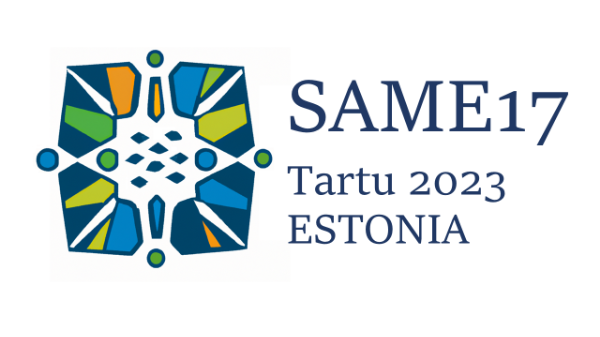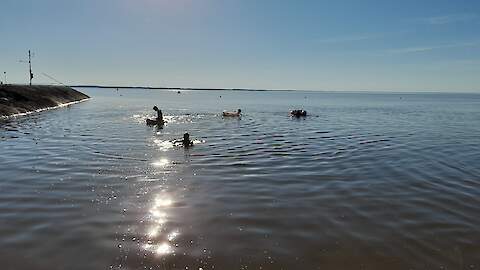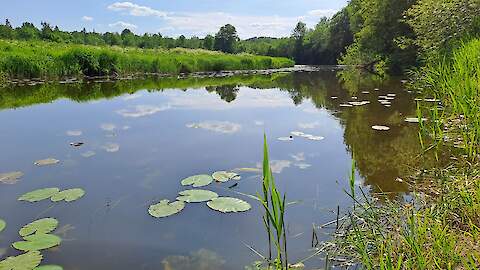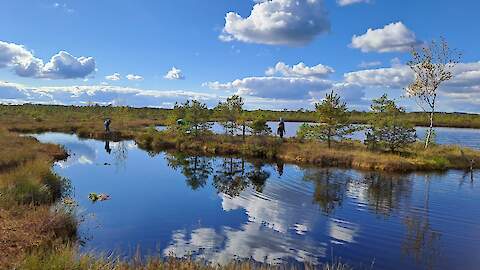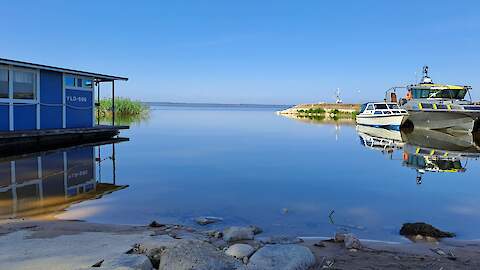Topics
Every known living being has to find their way to obtain carbon. There are many pathways that fundamentally take the central role in the metabolism. Mixotrophic organisms demonstrate that more than one solution can be utilized. There are also many obstacles on the way, like the scarcity of organic carbon in the vastness of the oligotrophic ocean or the need for enzymes to degrade complicated polymers in order to obtain it. Some microorganisms have to figure out how to find and hunt their prey in order to complete this mission. In aquatic microbial food webs carbon can go through unique 'roller coasters' which makes the study of the carbon cycle fascinating and complicated at the same time.
From all the things that are limiting one’s true potential, nitrogen and phosphorus can be placed high up in the list for aquatic microbial communities. Therefore, we can find many adaptations and strategies to overcome challenges related to the N and P cycles. The genotypic treasure chest determines to whom one can become. The expression of the respective genes, however, is widely determined by the environment. Nitrogen and phosphorus provide a chance to have a nice life but can also take it away by limitation of metabolic pathways. Microorganisms have various ways to overcome the deficiency of nutrients sustaining the functioning of the aquatic environment.
Many questions about the diversity, ecology, and evolutionary history of aquatic microbial eukaryotes remain unanswered. In this session, we welcome a wide array of presentations on research that address these important gaps in knowledge. Despite the fact that they are widespread, diverse and important in biogeochemical cycles, microbial eukaryotes have attracted less attention than their prokaryotic counterparts in many areas of research in environmental microbiology. Especially welcome are studies that combine multiple methodologies, like cultivation, omics, microscopy and flow cytometry.
It has become a cliché for marine biologists to point out that we know more about the surface of the moon than the depths of our oceans. Nevertheless, this statement is hard to ignore, because it is true and these great depths contribute a profoundly significant proportion of living space on Earth.
Chance to give a first conference talk for young researchers, no specific topic given. Early career researcher means here doctoral and immediate postdoctoral researcher.
Microbial life is full of interactions that include communication, exploitation, cooperation and full blown warfare. Under this topic we welcome presentations that explore different relationships between microorganisms themselves or with a host including between host and microbiome, viruses, parasites, symbionts, biofilm formation, AMR. Also including food web interactions and competition. Topics can cover microhabitats within or on the higher organisms and how microorganisms fight and/or help each other to colonize it, including food web interactions and competition, as well as microbial processes mediated by extracellular vesicles (EVs).
The amount of data, specifically next generation sequencing data, available on public data archives, such as the European Nucleotide Archive (ENA), is exponentially increasing, providing numerous opportunities for data mining, i.e. exploiting existing data sets in a new context or augmenting studies with existing data sets available on public archives to expand their scope. The session welcomes contributions from any field of aquatic microbial ecology that highlight both the potential and the challenges of ‘omics data mining but also raw data processing. Contributions may be based on the re-use (discovery and integration) of big data to enable new insights into microbial ecology, data science application for the analysis of large and heterogeneous data sets, or related to overcoming the challenges of enabling such data mining endeavours. Topics therefore include, but may not be limited to, sustainable research data management, metadata and nomenclature standards, heterogeneous data integration, advanced statistical approaches (i.e. proper use), and machine learning.
The use of sedimentary DNA (sedDNA) to track long-term changes in aquatic microbiota is a rapidly advancing field in paleoecological research. Talks on state-of-the-art analytical procedures for effective sampling, extraction, amplification, quantification and/or generation of inventories, and data analysis from sedDNA via high-throughput sequencing technologies are welcome. Also studies using microbial sedDNA for reconstructing past biological assemblages within waterbodies and their terrestrial catchments and insights about long-term changes in climate, anthropogenic impact and ecology in aquatic ecosystems itself fit this topic.
Impact of environmental change can be mediated by large scale shifts in abiotic factors that affect the entire ecosystem, but can also be due to slight alterations in food web functioning impacting specific taxa. Environmental change can happen gradually through pressure or suddenly via a pulse created by natural disturbance. In some cases, microbial communities can be the main drivers that bring changes to ecosystems. A wide spectrum of topics are welcome in this session covering various aspects of microbial life associated with: climate change, sea level rise, acidification of the ocean, transfer of alien species and other anthropogenic influences.
The interface between land and water bodies connects terrestrial and aquatic ecosystems forming a unique environment. Variation in water table level (e.g. rising sea levels, sinking coasts, changing precipitation patterns, etc.) modify hydrodynamic gradients and may enhance water body–land exchange processes in various freshwater and marine systems. In addition, surface water bodies have an open interface with the atmosphere. Aquatic system, atmosphere and land interactions are far-reaching, occurring on all sides of the interface, and therefore can only be understood when both long-term and event-based patterns and different spatial scales are taken into account. Talks covering the above mentioned interactions in microbial ecology are welcome.
Fungi are functionally and phylogenetically diverse components of all aquatic environments dwelling in a wide spectrum of habitats from high mountain lakes down to the deep ocean. Fungi also possess an extremely wide spectrum of hydrolytic enzymes making them excellent degraders of more refractory organic matter. Therefore, fungi hold important roles for organic matter cycling and food web dynamics in many aquatic ecosystems. Presentations about the spatio-temporal dimensions, diversity, functions and organismic interactions of fungi, e.g. trophic interactions including symbiosis and parasitism, in structuring aquatic food webs and beyond are welcome.
